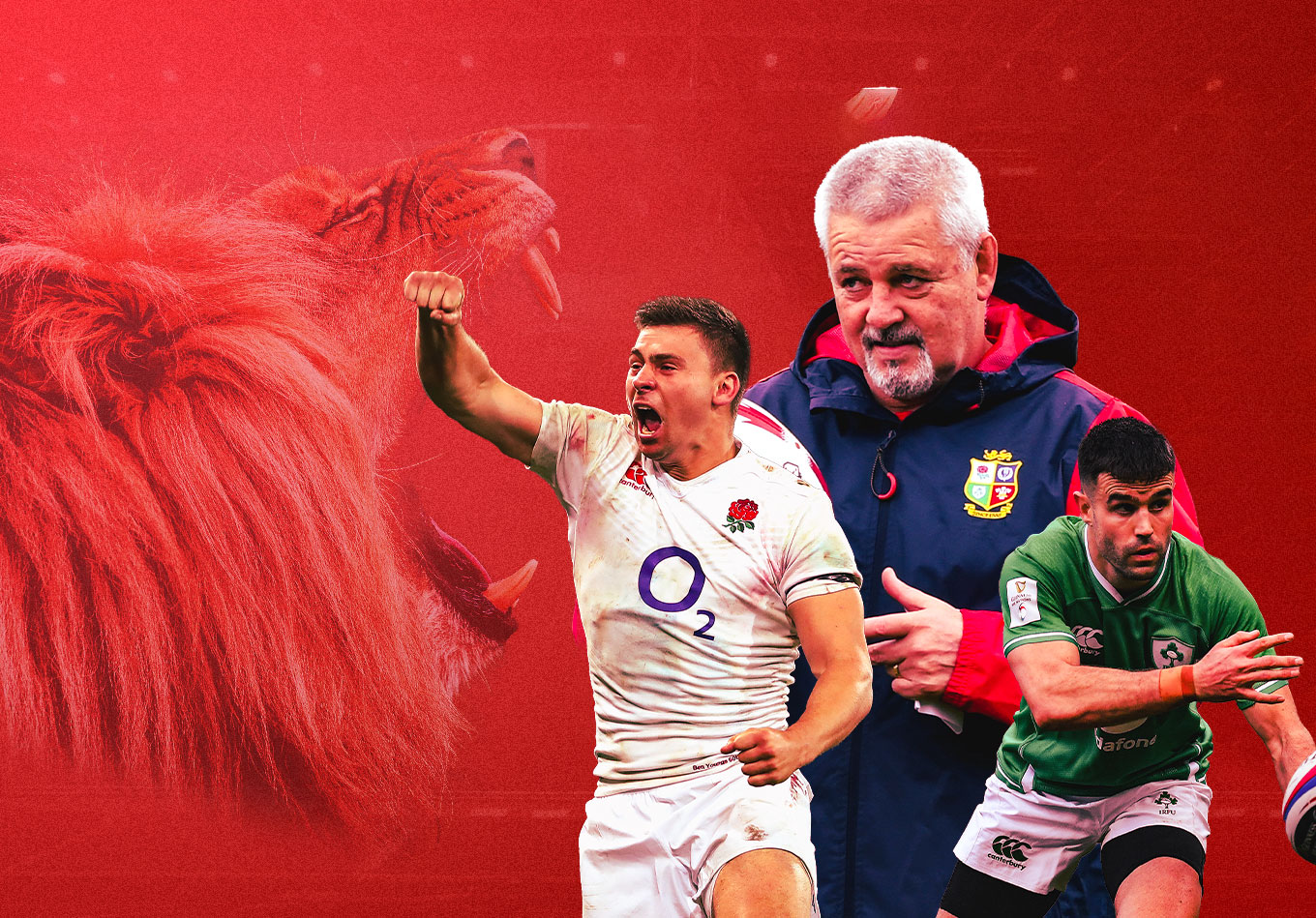With the Six Nations now over, all attention will turn to the Lions squad selection for South Africa. In part three of this multi-part series, we begin filling out our back line, giving our data-driven verdict on who should be on the plane.
The players in contention for a Lions squad place have done all they can. While opinions on team selection will rage all the way to the first Test, this series takes a subjective look at the players whose statistical profile could earn them a place in the starting Test team.
As outlined in our introduction to this series, the data analysis below covers:
• Players’ performance in all Test matches since the start of 2018.
• It will focus on key position-specific attributes.
• All player ranks are for international players with more than five appearances since the start of 2018.
No. 9: Scrum-Half
Names in the frame: Ben Youngs (England), Conor Murray (Ireland), Gareth Davies (Wales), Ali Price (Scotland)
It seemed for a while that nobody would compete with Aaron Smith for the crown of world’s best scrum-half. But then Faf De Klerk burst onto the scene just in time to lead his Springboks to World Cup glory. His diminutive height and mop of blonde hair may have fooled some, but the rugby world soon learnt that he possesses the speed, footwork and creativity that can change games.
Disrupting De Klerk may be as important for the Lions Test scrum-half as the role they play in dictating the attacking tempo. Fortunately (or not), each of them has the experience of having to man mark this type of opposition No.9, whether facing De Klerk for Sale or South Africa or playing against the similarly dynamic French star Antoine Dupont who has lit up the Six Nations in the past 12 months.

However, it will be the ability to control territory, marshal their forward pack and unleash the Lions’ plethora of dynamic backs that will determine Test selection.
They’re an interesting bunch. Conor Murray was the clear choice in 2017 but since that tour Ireland appear to be trying to find his replacement with Luke McGrath, Kieran Marmion, John Cooney and Jamison Gibson-Park all given opportunity. Despite that, in Ireland’s impressive win in the final game of the 2021 Six Nations, Murray put in a performance that showed form is temporary, but class is permanent.
Wales have also struggled to find consistency at No. 9. Although Gareth Davies has played the bulk of the minutes, Tomos Williams and recently Kieran Hardy have been given a shot. Scotland and England have enjoyed much more consistency at the position with Ali Price and 111-cap man Ben Youngs, but has this been more down to a lack of options?
The Lions squad will undoubtedly need a blend of two No. 9s in each Test and there is certainly a stylistic difference between the four candidates. Youngs and Davies provide the sniping threat around the fringes, leading international scrum-halves in average metres gained per match. Davies also ranks behind only Dupont in clean breaks (27) and defenders beaten (37). Both players have the ability to run support lines and the majority of their combined 10 Test tries over the last three years have come from being the man to finish off a line break.
On the other hand, you have Murray and Price are critical attacking metronomes. Both thrive off quick ball and are able to get their sides’ attacking talent into play with good speedy passes from the base of rucks.
Murray in particular leads all international scrum-halves with 100 passes per 80. Along with his 21 pass assists, he exudes control over the Irish game plan.
But as we’ve already discussed, this Test series may come down to the territory battle. And a scrum-half’s ability to control the kicking game from the base of the ruck can be a deciding factor.
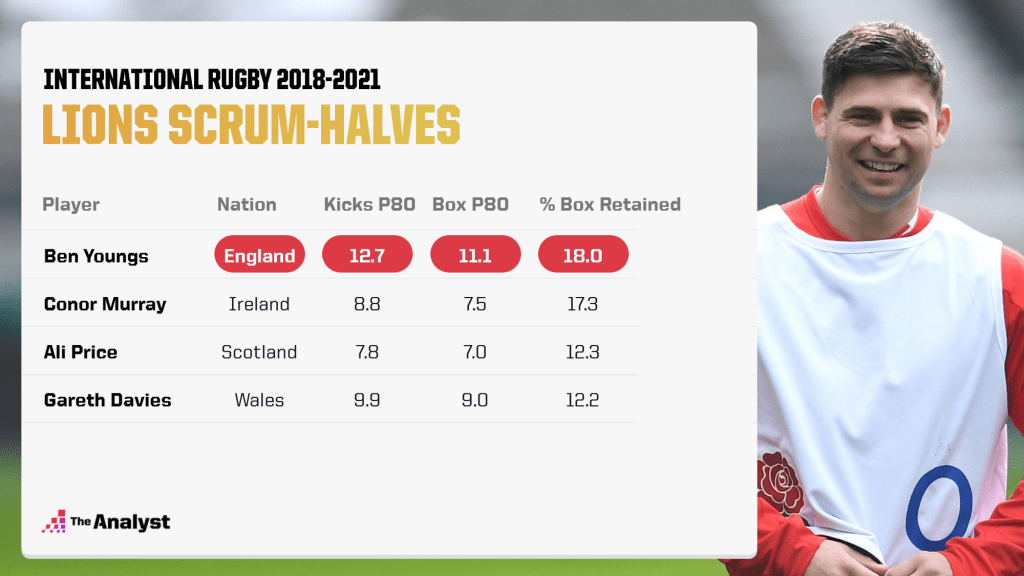
England’s game has been dominated recently by the kicking game and Youngs has been at the heart of that. It was also a core part of South Africa’s game at the World Cup. It’s no surprise to see both Youngs and De Klerk in the top three for box kicks per 80 during that tournament. Murray however, has always been lauded for his ability to place a box kick on a dime and there really is little to split him and Youngs in that aspect.
The Analyst’s Verdict: As scrum-halves are now used in pairs, this choice comes down to the order in which Gatland wants to use them. Does he go for the game controller early and hit them with a running threat as legs tire, or the reverse? We’re going to stick with that traditional approach, starting with Conor Murray’s game control through ruck speed and his kicking game with Youngs’ running impact off the bench as the game loosens up.
No 10: Fly-Half
Names in the frame: Owen Farrell (England), Johnny Sexton (Ireland), George Ford (England), Finn Russell (Scotland), Dan Biggar (Wales)
Fly-halves have a huge influence on a team’s style of play.. The mercurial Finn Russell has been credited with Scotland’s recent rise as one of the most exciting and creative teams in the Northern Hemisphere. On the flip side, despite Wales’ success under Warren Gatland, Dan Biggar was consistently pegged as a “game managing” fly-half. That may be the biggest backhanded compliment you can give a No. 10. Many forget that Biggar pulled the strings in an Ospreys team that was one of the most exciting in Europe for a time and he has had similar success at Northampton Saints.
Then we arrive to the Ford v. Farrell debate, a conundrum which may be up there with the Lampard v. Gerrard debate in the round ball code. Eddie Jones appears to switch between the two at No. 10 or lining them both up at No.10 and 12 depending on the match up. While they do certainly offer something different, any England failure in recent years has been pinned on the pair.
Add Johnny Sexton’s consistency at age 35 – despite being a magnet for injuries – and Gatland’s choice at 10 will undoubtedly be his most scrutinised.
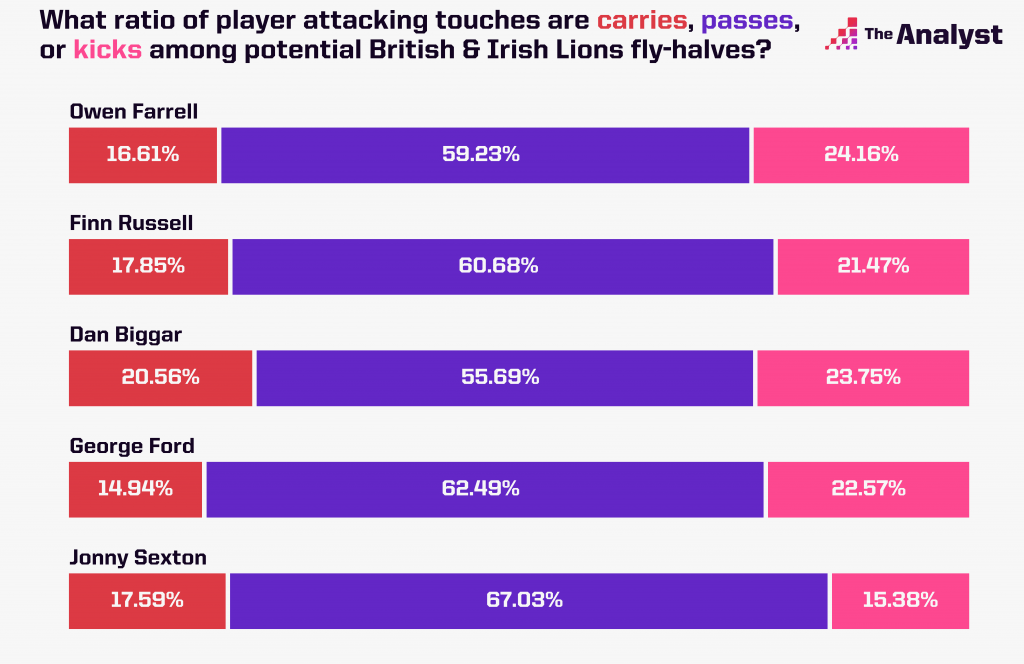
Time for some narrative-busting. Looking at the above chart, which shows how often each fly-half carries, passes or kicks the ball, we start to get a clear picture of how they play. It might surprise you to see that Biggar carries the ball more often than Russell. Or that Sexton kicks the least?
One thing that won’t surprise you is that the England No. 10s kick away more of their possessions than almost all their counterparts. Ford has actually kicked more times out of hand than any fly-half in world rugby (246) over the last three years.
Russell also does his fair share of kicking in play, averaging 11 per 80 – the most for fly-halves – but while Ford and Farrell look for field position Biggar (six) and Russell (five) use the boot as a creative weapon and lead world fly-halves in kicked try assists.
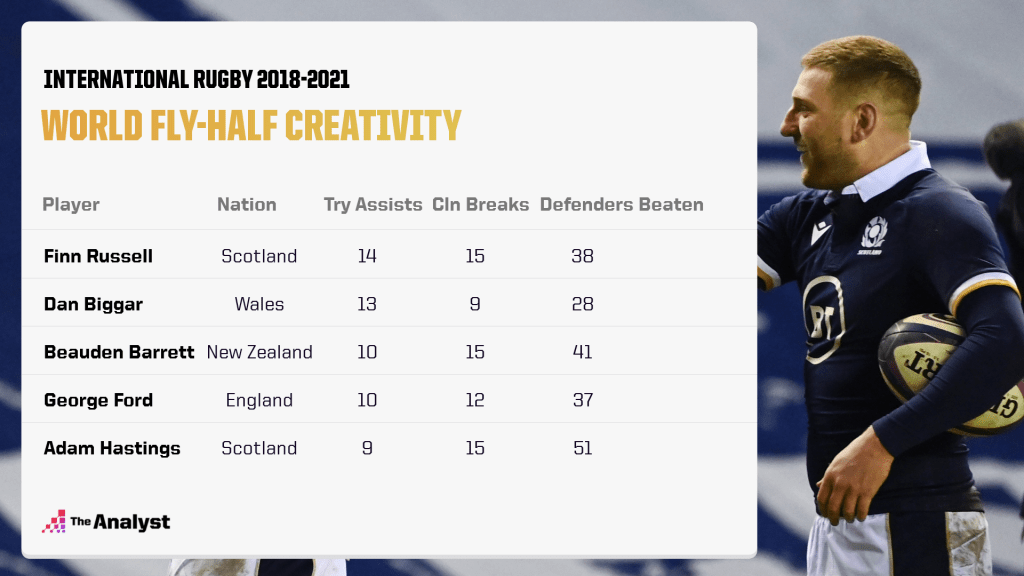
One area where Russell excels over his Lions challengers is creatively. From his passing (see his “pass of the century” v. England in 2018) to his deft kicking (the nutmeg grubber for Racing 92 v. Munster) and his dummies with ball-in-hand that have elite Test defenders clutching at air (poor old Peter O’Mahony for Munster), Russell can put on a show.
The Scot even has New Zealanders purring.
However, as well as moving the team around the field or unlocking a defence, a No. 10 also needs to defend. It is no surprise that Biggar (13) and Farrell (12) attempt the most tackles per game but the England captain, in particular, has had plenty of file issues with his tackling technique. As a result, he boasts a tackle % of just 70%, lower than Biggar (77%) and both Sexton and Ford (both 79%).
Lastly, to goal kicking. Previous Lions tours have hinged on crucial kicks. With a tight series predicted, it could fall on one of these 10s to produce under pressure.
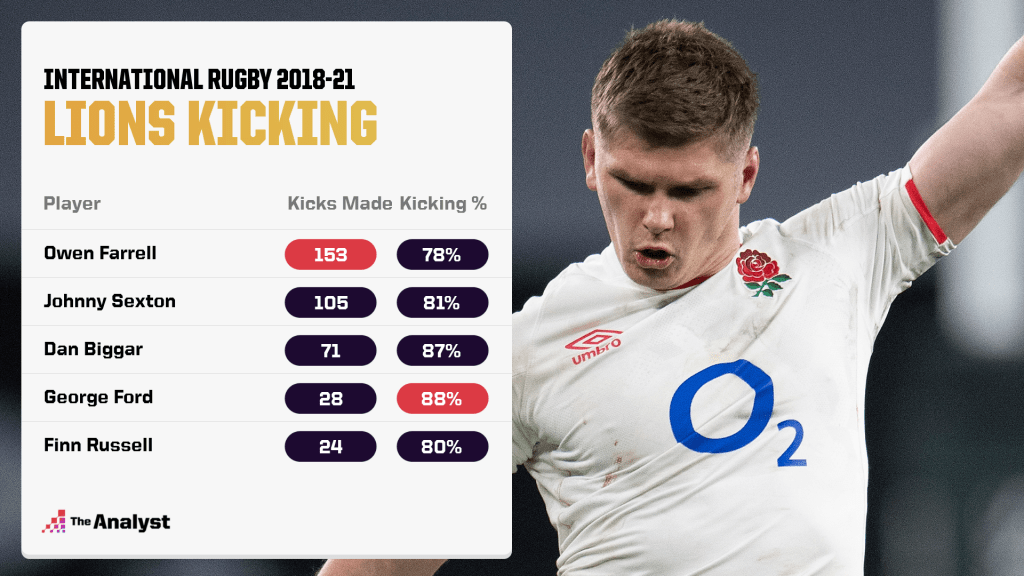
With Leigh Halfpenny in and out of the Wales Test side, Biggar has shouldered the kicking load with a level of consistency that adds to his all-around game. Farrell has continued to shoulder that responsibility for England despite the lowest percentage of the group. With options at full back (Stuart Hogg and Elliot Daly in particular) who can also offer length off the kicking tee, it remains to be seen whether this will be the area that defines the choice at No. 10.
The Analyst’s Verdict: Whilst we like to make our decisions based on cold hard facts at The Analyst, that can sometimes lead to picking the boring and consistent option. Our eyes can also be drawn to those numbers that quantify style and excitement on the field. There is no doubt the Springbok defence is going to be tough to break down and the Lions may need the unique set of keys that Finn Russell possesses to unlock that door this summer.
2021 Lions Squad Lineup: The Analyst’s Verdict So Far
Now that we’re set at No. 9 and 10, here’s how the squad is shaping up. Join us next time for the final part in this series where we finish our starting XV.
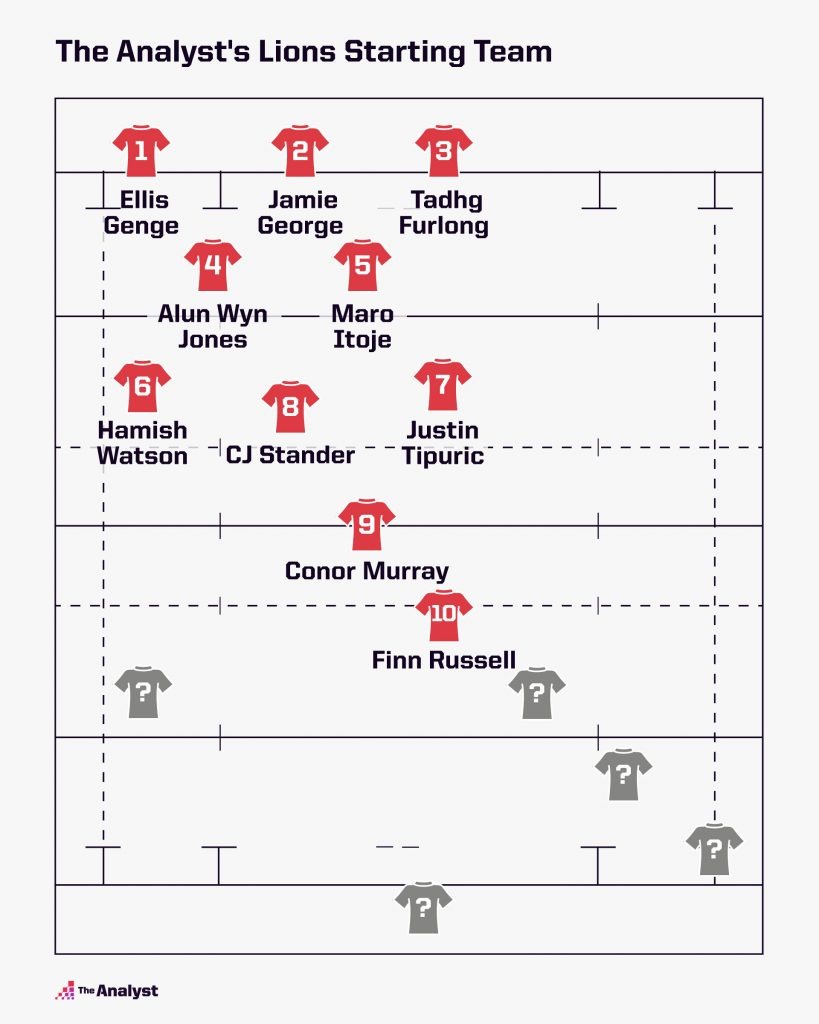
Design by Matt Sisneros.
